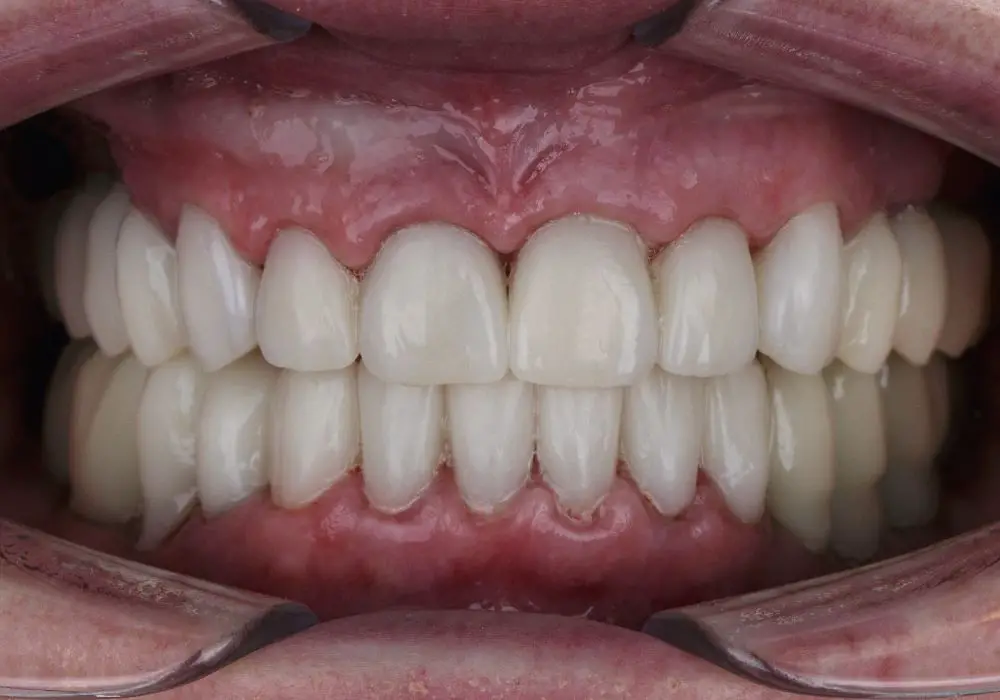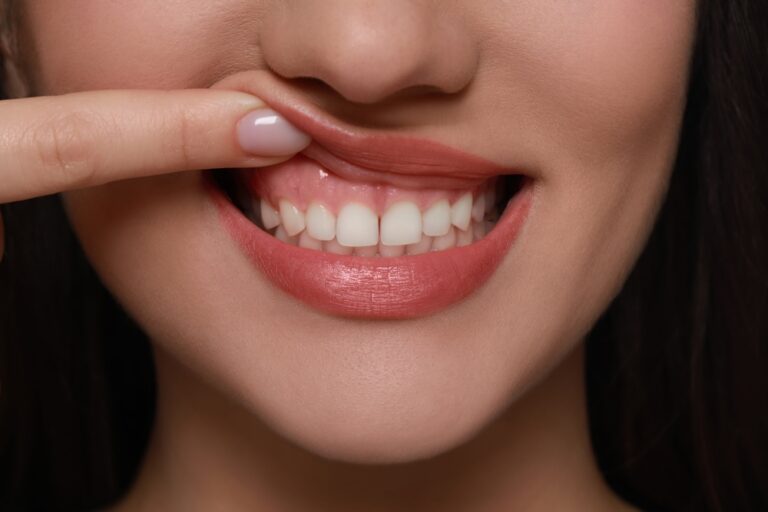Understanding tooth bonding
Tooth bonding is a procedure in which a tooth-colored resin material is applied directly to the tooth surface and then hardened using a special dental light. It is commonly used to improve the appearance of discolored, chipped, cracked, misshapen, or gapped teeth. The resin bonds to the natural tooth structure, creating a smooth and seamless look.
Tooth bonding is an affordable and non-invasive option that can often be completed in a single office visit. It does not require reshaping or removing significant amounts of natural tooth enamel. This makes it a conservative approach compared to options like dental veneers or crowns.
How long do tooth bonding results last?
Tooth bonding can last for 5-10 years or longer with proper care. However, since the resin material is not as strong and durable as a natural tooth, there is a chance it can become stained, chipped or damaged over time. Factors that affect the longevity of bonding include:
- Oral hygiene – Poor brushing and flossing habits can lead to plaque buildup and staining at the bonding edges.
- Diet and lifestyle – Eating hard, crunchy, or acidic foods and drinks can contribute to bonding chipping or cracking.
- Habits like teeth grinding or nail biting – These can put excessive stress on the bonding.
- Location on the tooth – Bonding on the edges of front teeth tends to wear faster than bonding in other spots.
Regular dental checkups and cleanings are important for monitoring the condition of the bonding so repairs can be made promptly if needed. Avoiding chomping on ice and hard candies helps prevent chipping. Using a night guard can protect from damage due to teeth grinding.
When might tooth bonding need to be replaced?
There are several reasons tooth bonding may need to be repaired or replaced completely:
- Staining – Nicotine, coffee, tea, red wine and certain foods can cause the bonding resin material to discolor over time.
- Chipping or cracking – Small fractures in the bonding can occur from trauma. Larger cracks may mean the entire bonded section needs replacing.
- Bonding loss – In some cases, the bonding does not adhere properly or falls out completely. This requires a new bonding procedure.
- Decay – If decay develops at the bonding edges, the resin must be removed and replaced.
- Gum recession – If gums recede around a bonded tooth, the stained tooth root could become visible.
- Change of plans – Occasionally a patient who gets bonding decides later they would prefer a different cosmetic treatment like veneers instead.
To extend the life of tooth bonding, be diligent about daily oral hygiene, avoid chewing hard items, wear a night guard if you grind your teeth, and see your dentist regularly to catch any issues early.
How many times can bonding be redone?

Many patients wonder – how many times can I get my bonding redone? The answer is that teeth can be re-bonded multiple times if needed. There is no set limit. However, there are some guidelines to consider:
Bonding requires a structurally sound tooth
The natural tooth surface needs to be in good condition to properly roughen and etch it for strong bonding adhesion. Areas of decay or significant damage are not suitable surfaces for repeated bonding. If the tooth structure underneath becomes compromised over time, other restorations like dental crowns may be required.
Enamel can wear down slightly with each bonding procedure
A tiny amount of enamel may be removed each time bonding is done on a tooth. This is due to surface roughening and etching required for bonding protocol. Excessive enamel removal can increase tooth sensitivity or the risk of future problems.
Success depends on careful technique and maintenance
The dentist’s skill and attention to detail each time bonding is replaced is key. Strictly following home care instructions and getting professional maintenance helps ensure the best results. Regular dental cleanings and minimizing bonding stressors also play a role.
Results may not be identical each time
While the dentist aims to achieve the same look when re-bonding a tooth, variables during the procedure and in the materials themselves make an exact match unlikely. Minor variations in shade or shape may be noticeable.
Guidelines for number of bonding replacements

There are no absolute rules dictating when a tooth can no longer be successfully bonded. However, these general guidelines provide an idea of typical ranges:
- Front teeth: Can often be bonded successfully 3-5 times or more
- Back teeth: May only allow 1-2 bonding replacements due to heavier biting forces
- Patients under age 50: Usually can get bonding redone more frequently
- Patients over age 50: May be limited to fewer bonding replacements due to enamel thinning over time
- Bonding to close small gaps: Can frequently be redone successfully
- Bonding for smile makeovers: Might permit only 1-3 replacements before considering veneers
The condition of the natural tooth structure and purpose of the bonding also impact numbers. For instance, lightly bonded discolored teeth may permit more redos than heavily bonded fractured teeth.
Consulting your dentist is the best way to determine appropriate options for your unique situation if bonding repair or replacement is needed. With careful treatment and maintenance, lasting results are possible in many scenarios.
Number of times specific teeth can be bonded
The number of times bonding can be redone on a particular tooth depends on factors like:
- Tooth type (front vs. back)
- Amount of enamel present
- Presence of decay or damage
- Current thickness of remaining enamel
- Purpose of bonding
- Forces on that tooth during chewing
Here are some estimates for particular tooth types:
| Tooth | Typical Bonding Replacement Range |
|---|---|
| Front teeth (incisors, canines) | 3-8 times |
| Back teeth (premolars) | 2-5 times |
| Back teeth (molars) | 1-3 times |
Keep in mind that patients with congenitally thin enamel or previous significant enamel loss may be toward the lower end of typical ranges for their tooth type. Regular dental exams help monitor tooth conditions.
Procedure for replacing tooth bonding
The process for removing old bonding and applying new bonding is generally as follows:
- Local anesthetic administered
- Old bonding material is roughened using a diamond bur
- Bonding material is carefully removed using a drill
- Tooth surface is cleaned and roughened slightly
- Etching gel applied to prepare tooth for new bond
- New bonding material layered onto tooth surface
- Bonding material sculpted into proper anatomical shape
- Bonding hardened and smoothed using curing light
- Finishing and polishing of new bonding
- Bite adjustment as needed
- Home care instructions provided
More enamel may be removed during each bonding replacement procedure depending on the extent of roughening and etching required. The dentist will focus on preserving as much natural tooth structure as possible.
Cost for bonding replacement

The cost to replace tooth bonding depends on several factors, such as:
- Number of teeth receiving bonding redo
- Complexity of the procedure
- Amount of enamel removal and tooth prep needed
- Additional materials required
- Dentist fees based on location and experience
According to the 2022 national dental fee survey, costs can range from:
- Small bonding repair: $100-$300
- 1-2 teeth re-bonded: $250-$600
- 3 or more teeth re-bonded: $600-$1,400
These are general estimates only. The dentist will provide an accurate quote based on your personalized treatment at the time of service. They will also discuss your insurance coverage and any out-of-pocket expenses.
Alternatives if bonding cannot be redone
If a tooth cannot be successfully re-bonded additional times due to enamel loss, decay or other factors, alternative options may include:
- Whitening – If discoloration is the primary issue, professional teeth whitening may be attempted to revive the tooth shade.
- Dental veneers – These thin porcelain or composite overlays are bonded to teeth with minimal enamel removal. Veneers provide longer-lasting results than direct bonding.
- Crowns – A dental crown covers the entire visible portion of a tooth. It requires more extensive tooth reduction but provides a very durable restoration.
- Dental implants – For a severely damaged tooth that cannot be salvaged with other methods, an implant and crown can replace the visible tooth.
- Orthodontics – In some cases of small tooth gaps, orthodontic treatment to shift teeth into alignment may help avoid extraction and replacement.
Consult your dentist to determine which option makes the most sense for your situation if bonding is no longer an ideal choice. With today’s advances in cosmetic and restorative dentistry, teeth that cannot be bonded anymore have other excellent treatment options available.
FAQ
Here are answers to some frequently asked questions about redoing tooth bonding:
How long does a bonded tooth last?
With proper care, tooth bonding can last 5-10 years or longer before needing repair or replacement. Avoiding bonding stressors like biting hard foods can help extend its lifespan.
Does bonding ruin your teeth?
When applied correctly, bonding does not significantly damage the tooth. Only a tiny amount of enamel is removed, and the resin bonds securely to the roughened surface. Overall it is a very conservative technique.
Can you bond teeth twice?
Teeth can be bonded more than once or twice in most cases. Front teeth often permit 3-5 re-bondings or more. Back teeth may be limited to only 1-2 times before needing an alternative restoration.
How do you prepare a tooth for re-bonding?
The dentist will use a diamond bur and drill to rough up the old bonding material and then carefully remove it with the drill. After cleaning the underlying tooth, etching gel is applied to roughen and prepare the natural enamel for re-bonding.
Does re-bonding damage enamel?
A miniscule amount of enamel may be lost each time bonding is redone on a tooth. The dentist aims to keep enamel removal minimal. As long as plenty of enamel remains, re-bonding is still possible.
Conclusion
While tooth bonding typically lasts many years, it does not have the longevity of materials like dental crowns and veneers. Over time, re-bonding and minor repairs may be needed. In many cases, front teeth can be successfully re-bonded 3 to 8 times based on factors like enamel thickness and bonding purpose. Back teeth may only tolerate 1-3 replacements before requiring an alternative restoration. Proper technique, dental upkeep, and avoiding bonding stressors helps extend the life of bonding. With periodic repairs when needed, properly bonded teeth can continue looking beautiful for many years before more significant work becomes necessary.







